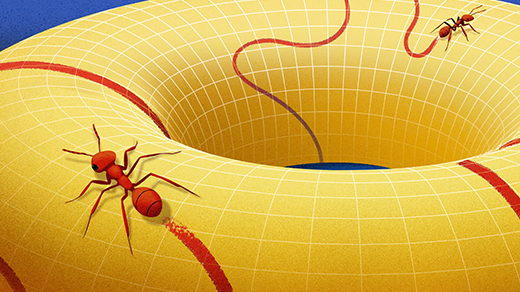Archive
Latest Articles
Physicists Take the Imaginary Numbers Out of Quantum Mechanics
Quantum mechanics has at last been formulated exclusively with real numbers, bringing a mathematical puzzle at the heart of the theory into a new era of inquiry.
How Your Brain Creates ‘Aha’ Moments and Why They Stick
A sudden flash of insight is a product of your brain. Neuroscientists track the neural activity underlying an “aha” and how it might boost memory.
What Is a Manifold?
In the mid-19th century, Bernhard Riemann conceived of a new way to think about mathematical spaces, providing the foundation for modern geometry and physics.
In a First, AI Models Analyze Language As Well As a Human Expert
If language is what makes us human, what does it mean now that large language models have gained “metalinguistic” abilities?
Carlo Rovelli’s Radical Perspective on Reality
The theoretical physicist and best-selling author finds inspiration in politics and philosophy for rethinking space and time.
Shark Data Suggests Animals Scale Like Geometric Objects
Despite their wide variety of sizes, niches and shapes, sharks scale geometrically, pointing to possible fundamental constraints on evolution.
First Shape Found That Can’t Pass Through Itself
After more than three centuries, a geometry problem that originated with a royal bet has been solved.
The Game Theory of How Algorithms Can Drive Up Prices
Recent findings reveal that even simple pricing algorithms can make things more expensive.
How Soon Will the Seas Rise?
The uniquely vulnerable West Antarctic Ice Sheet holds enough water to raise global sea levels by 5 meters. But when that will happen — and how fast — is anything but settled.








